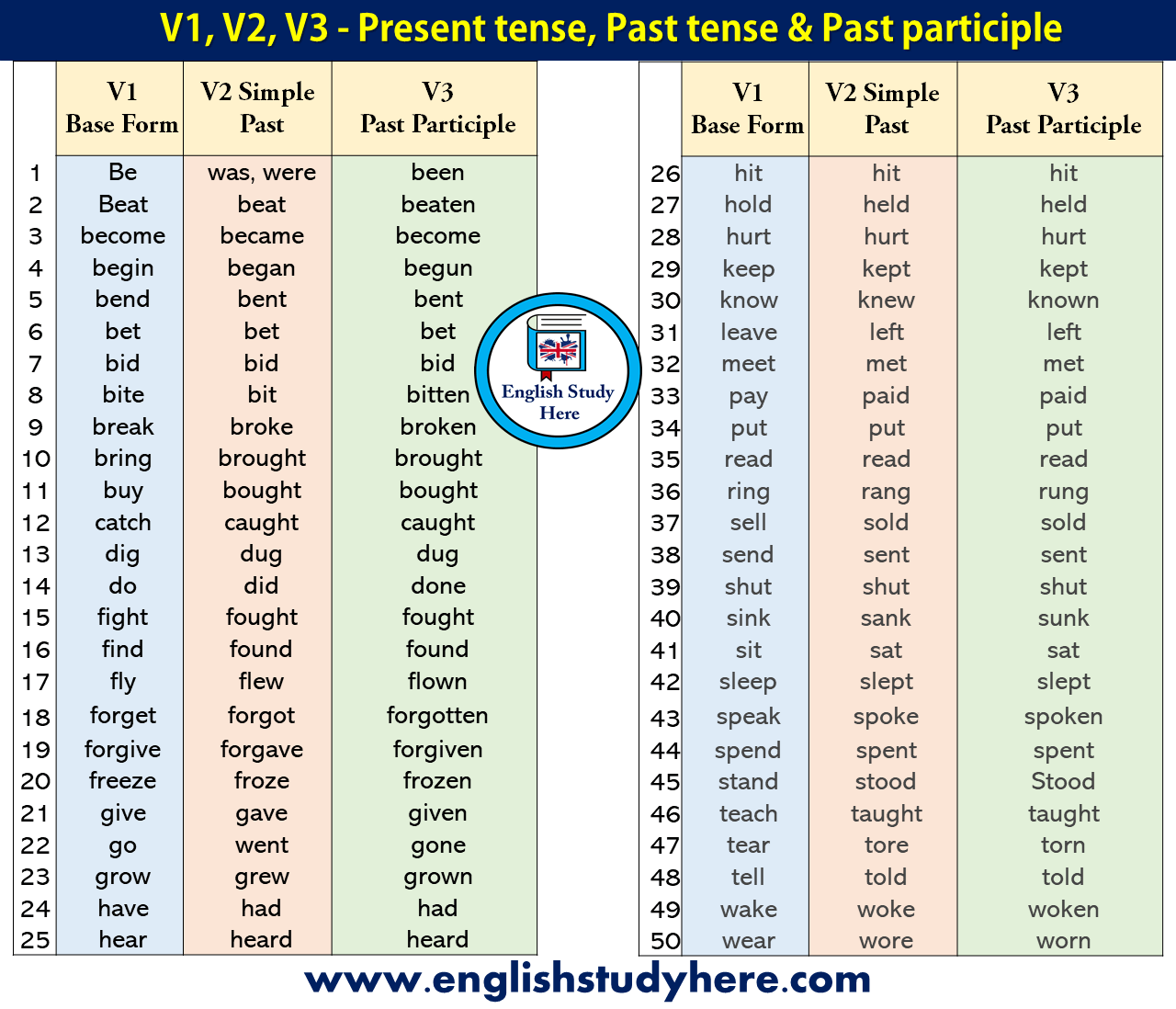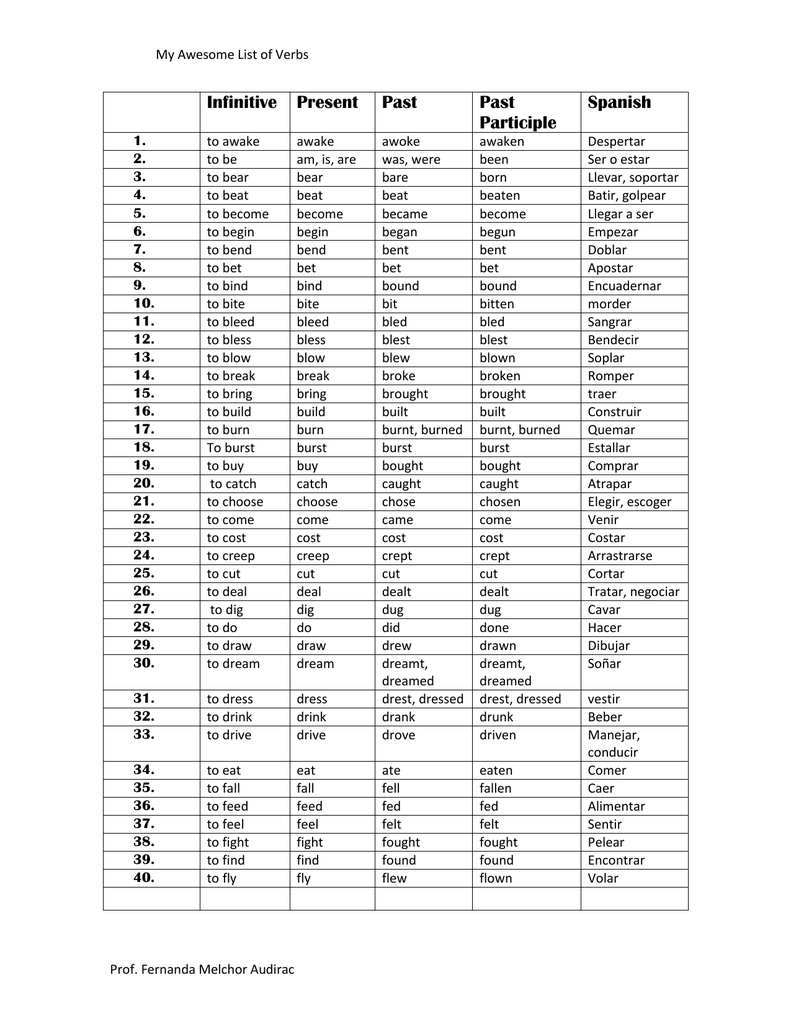



For example, the past tense of the verb break is broke and the past participle is broken. The past participle and the past tense of irregular verbs are not generally formed by adding (e)d or t. The past participle of regular verbs is usually identical to the past tense, while the past participle of irregular verbs is often different: In many cases the terminal consonant is doubled before adding ed (see Spelling Words with Double Consonants). When a basic form ends in y, it is generally changed to i. If the verb is regular (or weak) add ed, d, or t to the present form. The present participle is often used as a modifier. For example, the word group I walking to the store is an incomplete and ungrammatical sentence, while the word group I am walking to the store is a complete sentence. Note that the present participle cannot function as a predicate unless it has an auxiliary verb. To form the present participle, the suffix ing is generally added to the basic form: The infinitive form is a compound verb made up of the preposition to and the basic form: The basic form (or root) is the form listed in the dictionary, which is generally the first-person singular of the simple present tense (except in the case of the verb to be): There are four principal forms: basic or root, present participle, past and past participle. The following English irregular verbs are now obsolete and use the standard past and participle forms (-ed).English verb tenses are formed by combining one of the principal forms of a main verb with one or more auxiliary verbs. We do not foresee all the irregular verbs ever being standardized, but some of the more minor variations in less commonly used words will probably disappear in the next genration or two. If the word ends in an e, then you can simply add d. The trend, in English, and especially in American English, is to standardize the irregular verbs. Regular verbs can be changed to the past tense by adding ed on the end. Table of the most common irregular verbs infinitive


 0 kommentar(er)
0 kommentar(er)
